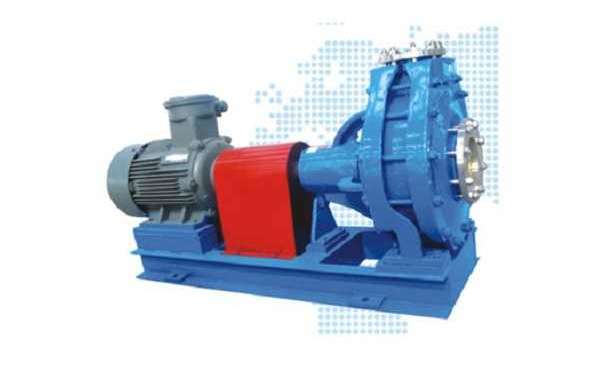The acid resistant submersible pump replaces the dynamic seal with a static seal, so that the overcurrent parts of the pump are in a completely sealed state, which solves the mechanical seal problems of other magnetic pumps. The magnetic pump has compact structure, beautiful appearance, small volume, low noise, reliable operation and convenient use and maintenance. The following introduces the five structural functions of acid resistant submersible pump.
1. Sliding bearings
The materials of acid resistant submersible pump sliding bearings are impregnated graphite, filled PTFE, engineering ceramics, etc. Because engineering ceramics have good heat resistance, corrosion resistance and friction resistance, the sliding bearings of acid resistant submersible pumps are mostly made of engineering ceramics. Because engineering ceramics are very brittle and have a small expansion coefficient, the bearing clearance should not be too small to avoid shaft-holding accidents.
Since the sliding bearing of the acid resistant submersible pump is lubricated by the transported medium, different materials should be selected to make the bearing according to different media and working conditions.
2. Security protection
When the driven parts of the magnetic drive are running under overload conditions or the rotor is stuck, the main and driven parts of the magnetic drive will automatically slip off to protect the pump. At this time, under the action of the active rotor alternating magnetic field, the permanent magnet on the magnetic drive will generate eddy loss and magnetic loss, which will cause the temperature of the permanent magnet to rise, and the magnetic drive will slip out and fail.
3. Permanent magnet
The permanent magnet made of rare earth permanent magnet material has a wide working temperature range (-45-400 ℃), high coercivity, good anisotropy of the magnetic field direction, and no demagnetization occurs when the same poles are close to each other. It is a good magnetic field source.
4. Isolation sleeve
When the metal isolation sleeve is used, the isolation sleeve is in a sinusoidal alternating magnetic field, and eddy current is induced on the section perpendicular to the direction of the magnetic field and converted into heat. The expression for eddy current is: . Among them, Pe - eddy current; K - constant; n - rated speed of pump; T - magnetic transmission torque; F - pressure in spacer; D - inner diameter of spacer; - resistivity of material; - tensile strength of material. When the pump is designed, n and T are given by the working conditions, and the eddy current can only be reduced from the aspects of F, D, , and so on. The isolation sleeve is made of non-metallic materials with high resistivity and high strength, which is very effective in reducing eddy current.
5. Control of cooling and lubricating fluid flow
When the pump is running, a small amount of liquid must be used to flush and cool the annular gap area between the inner magnetic rotor and the isolation sleeve and the friction pair of the sliding bearing. The flow of coolant is usually 2%-3% of the pump design flow, and the annular gap area between the inner magnetic rotor and the spacer sleeve generates high heat due to eddy currents. When the cooling lubricating fluid is not enough or the flushing hole is not smooth or blocked, the temperature of the medium will be higher than the working temperature of the permanent magnet, the inner magnetic rotor will gradually lose its magnetism, and the magnetic drive will fail. When the medium is water or water-based liquid, the temperature rise in the annulus region can be maintained at 3-5°C; when the medium is hydrocarbon or oil, the temperature rise in the annulus region can be maintained at 5-8°C.
acid resistant submersible pump https://www.luolintec.com/FWY-type-wear-resistant-submerged-pump.html







